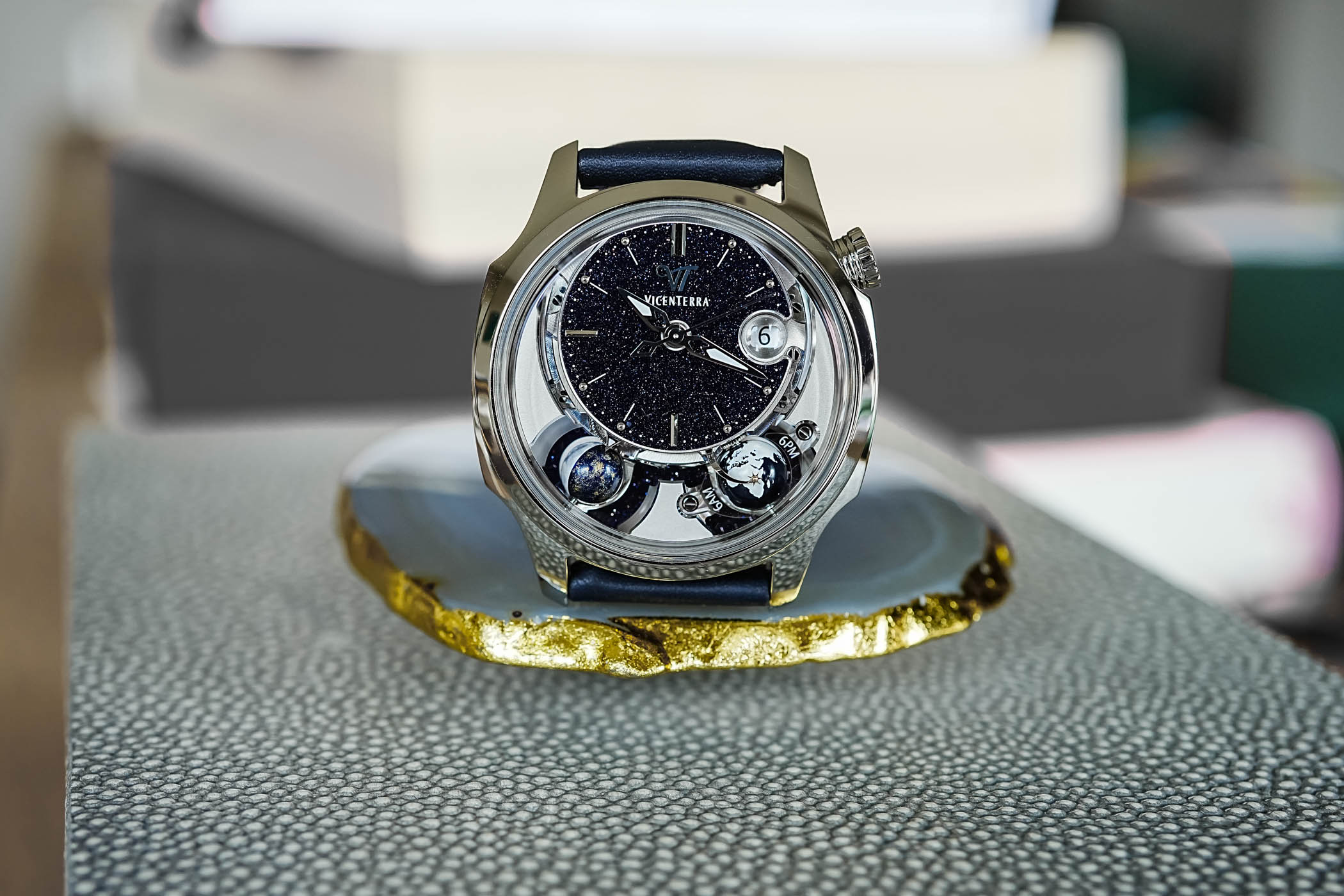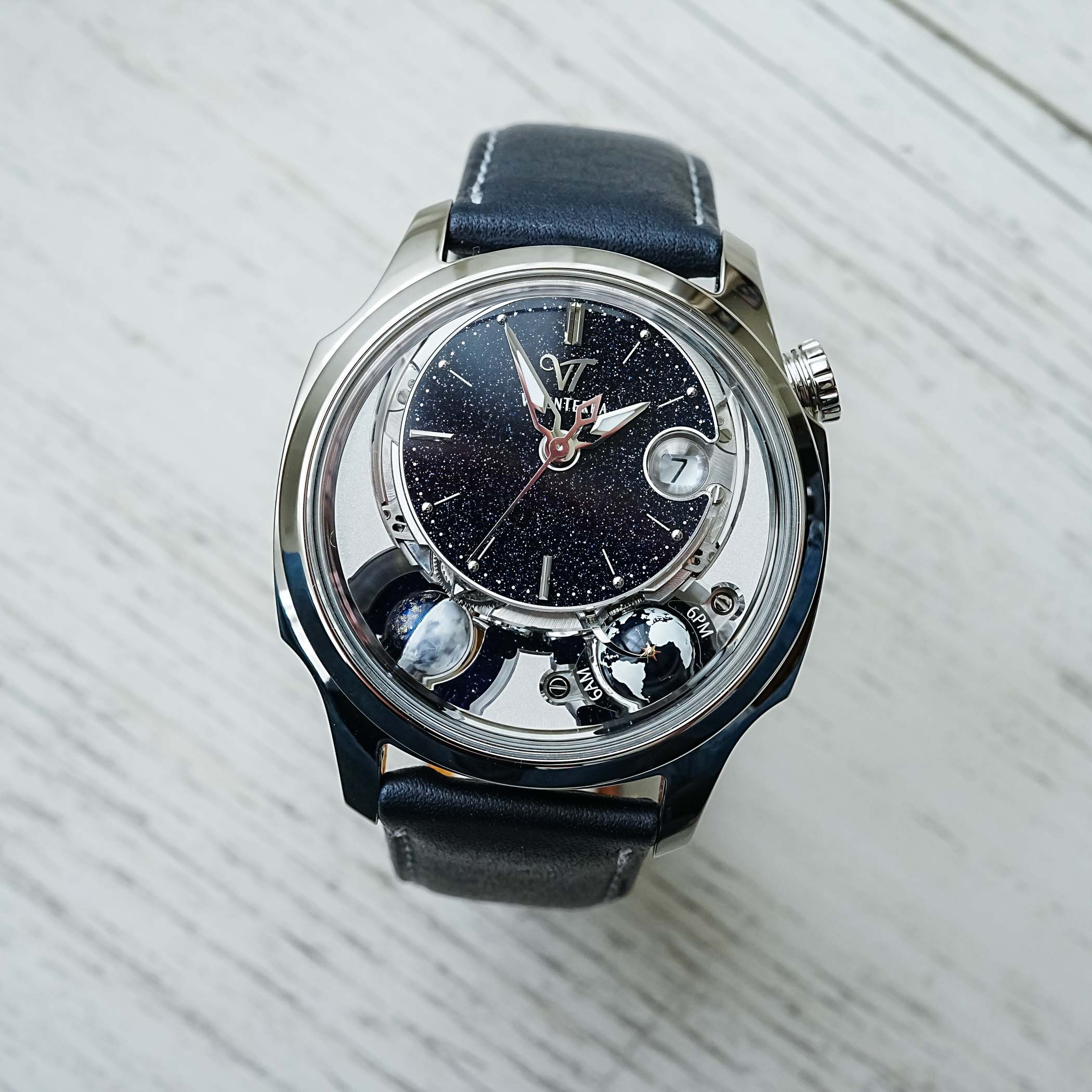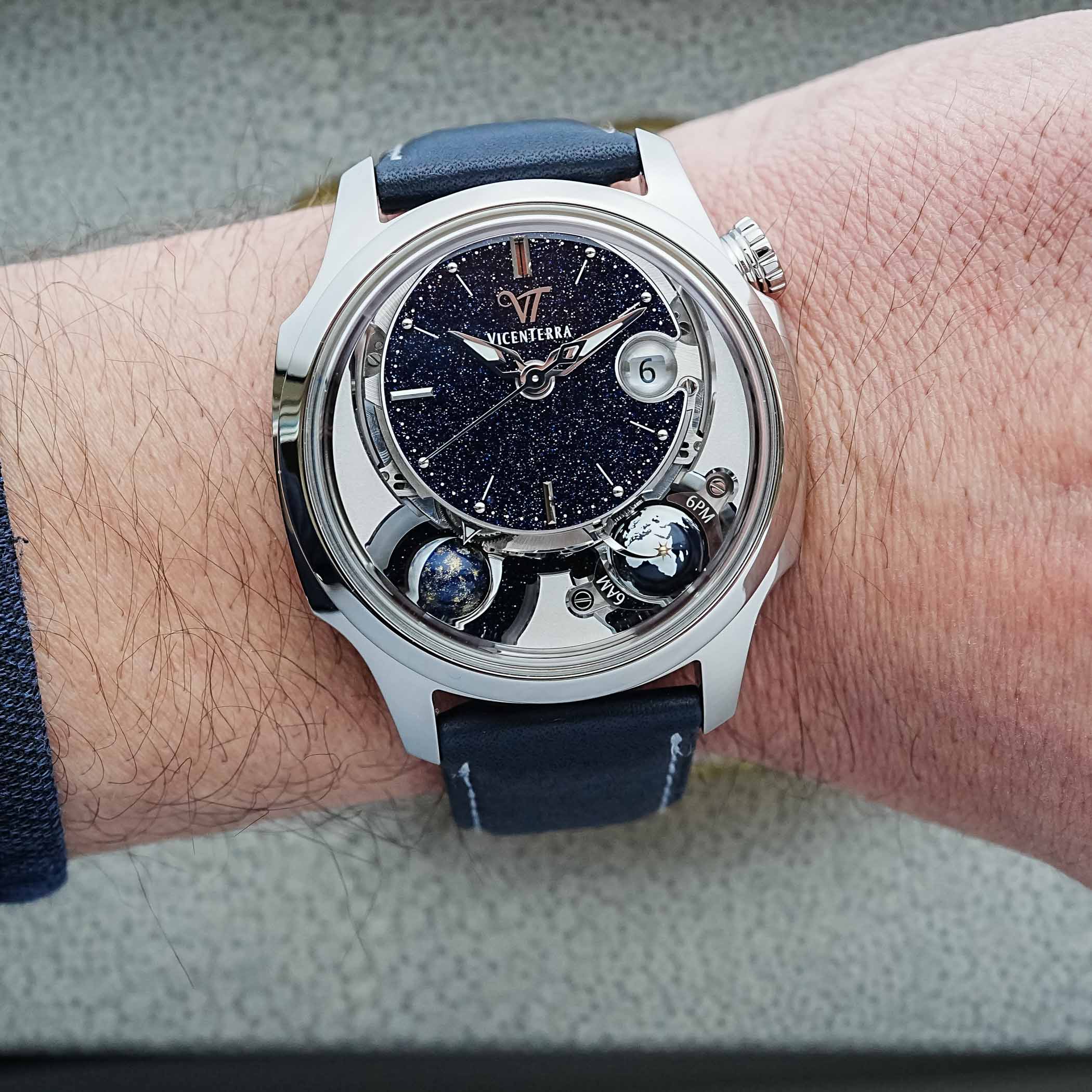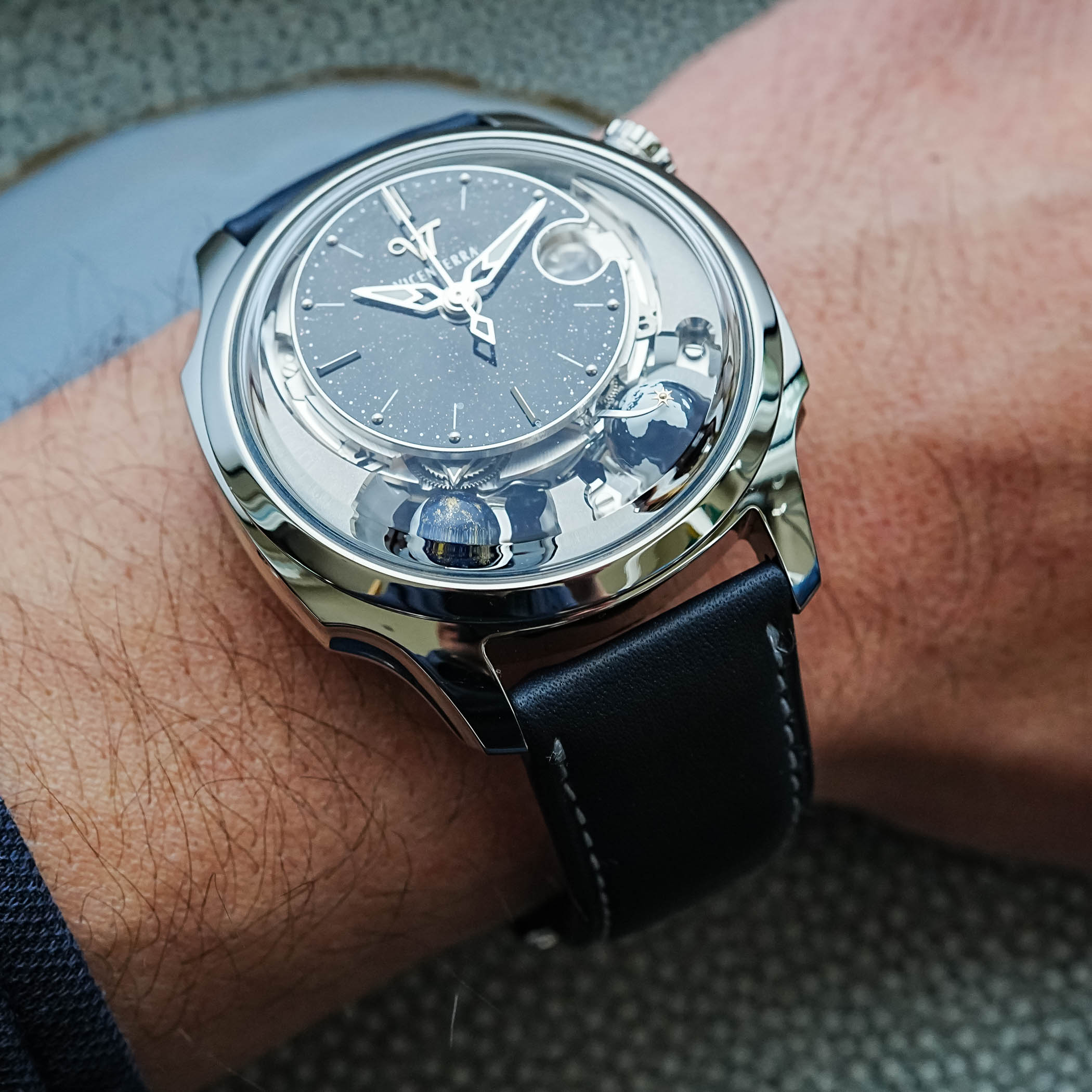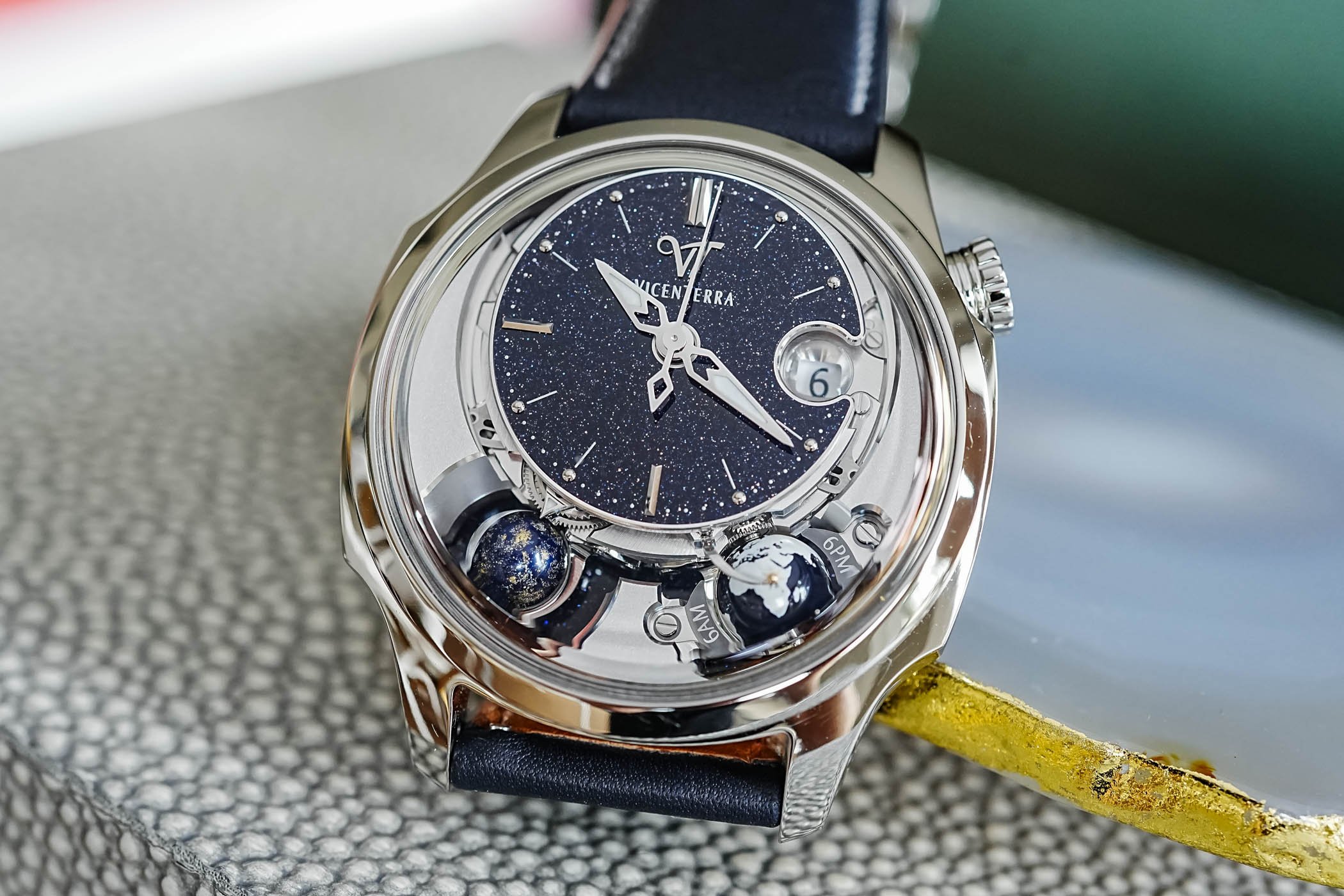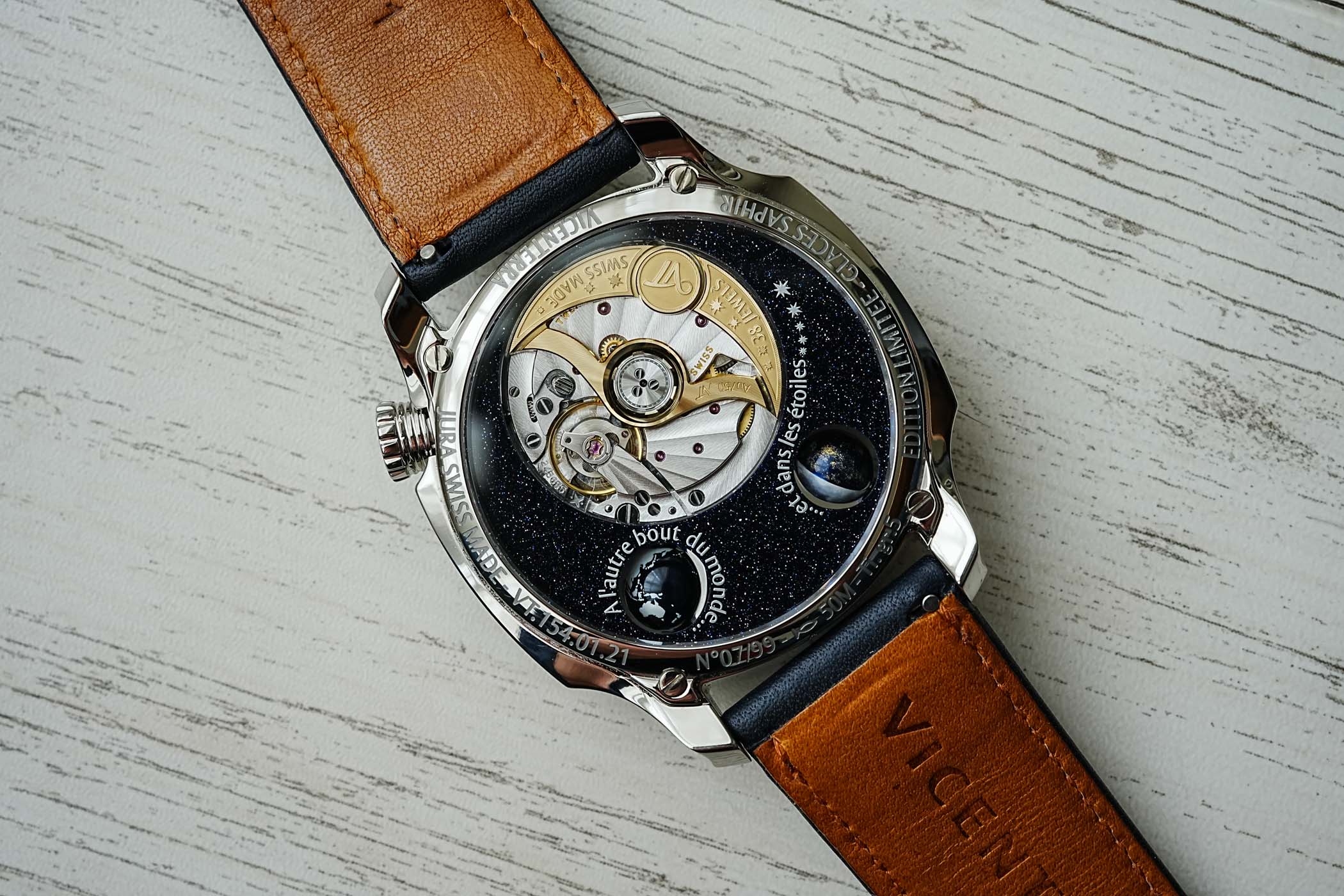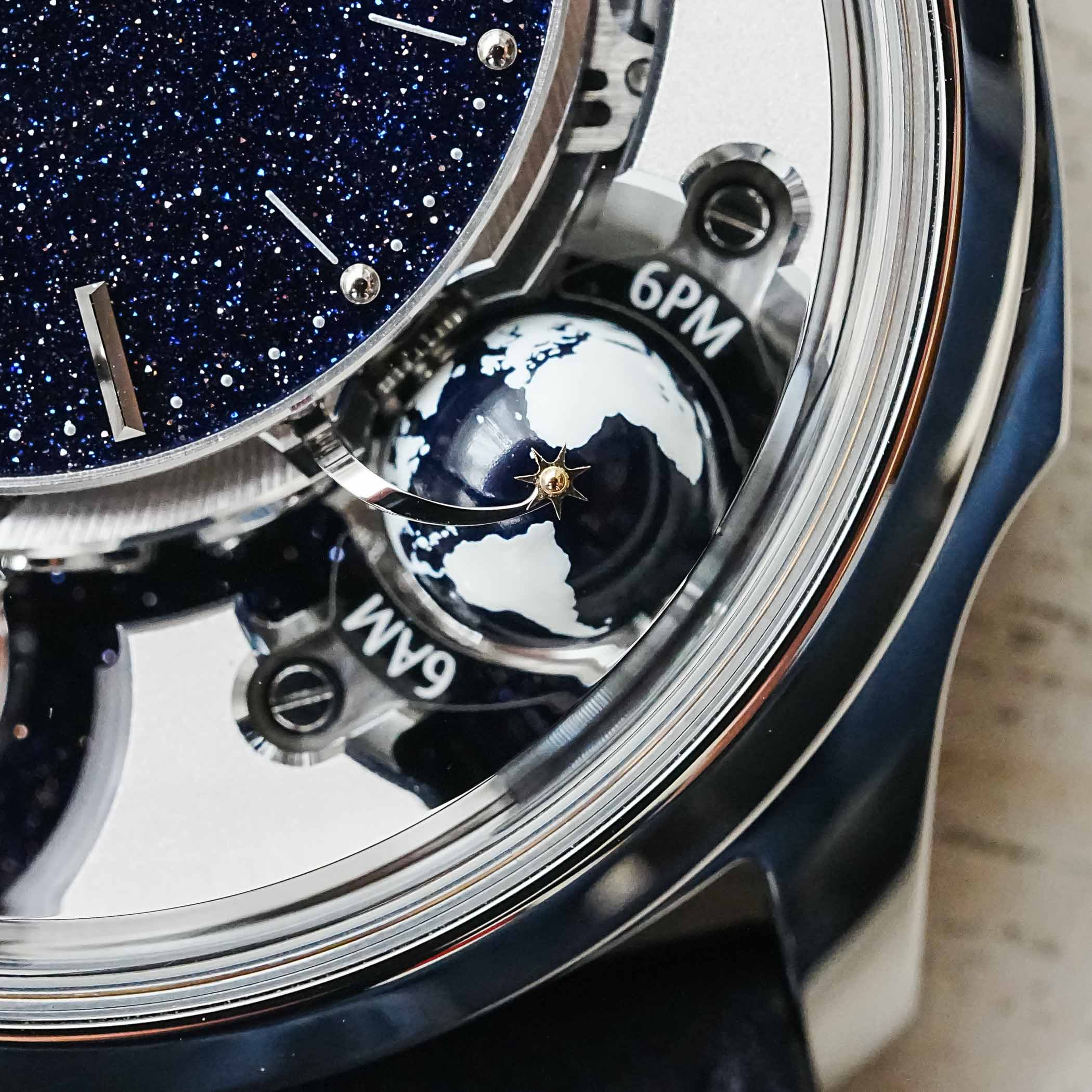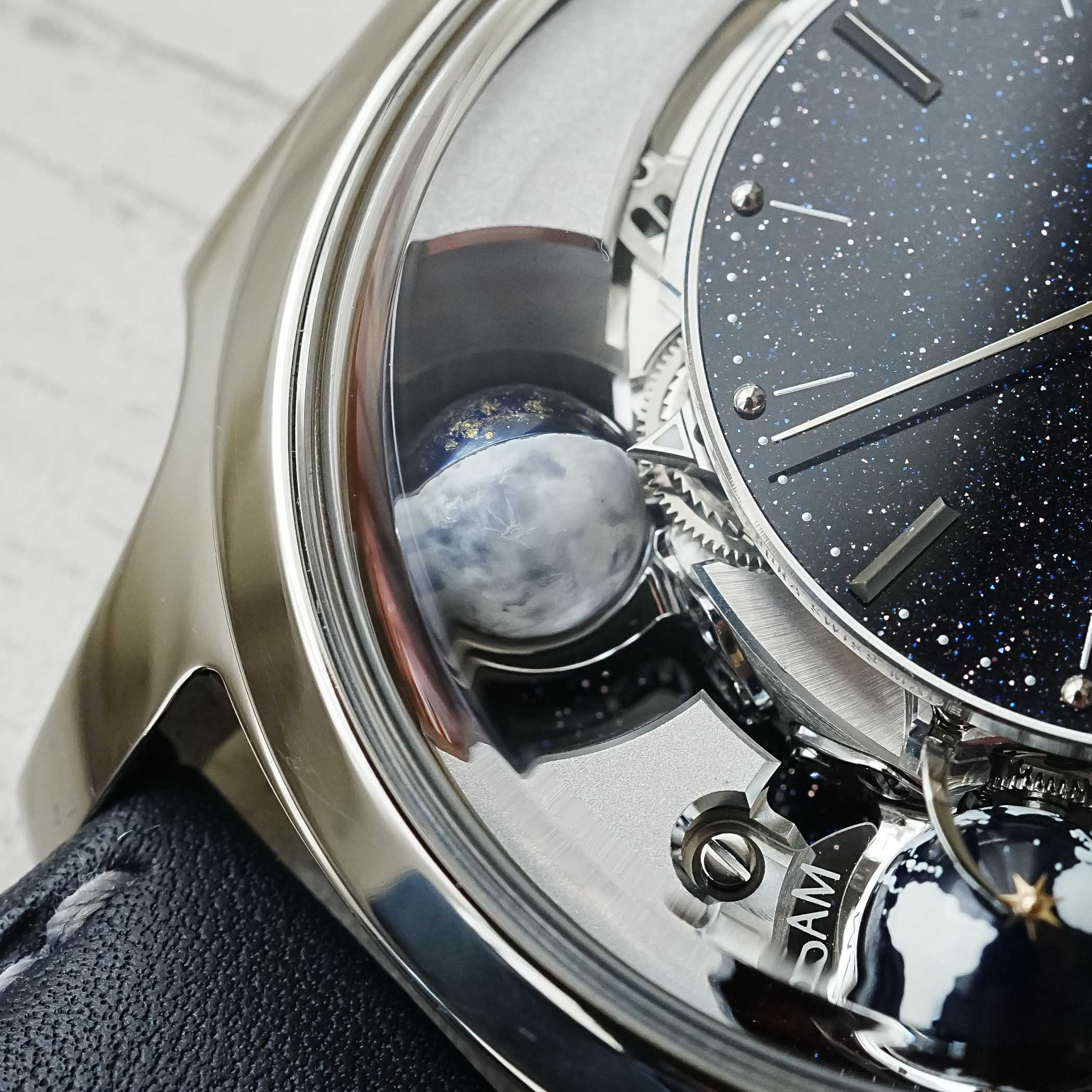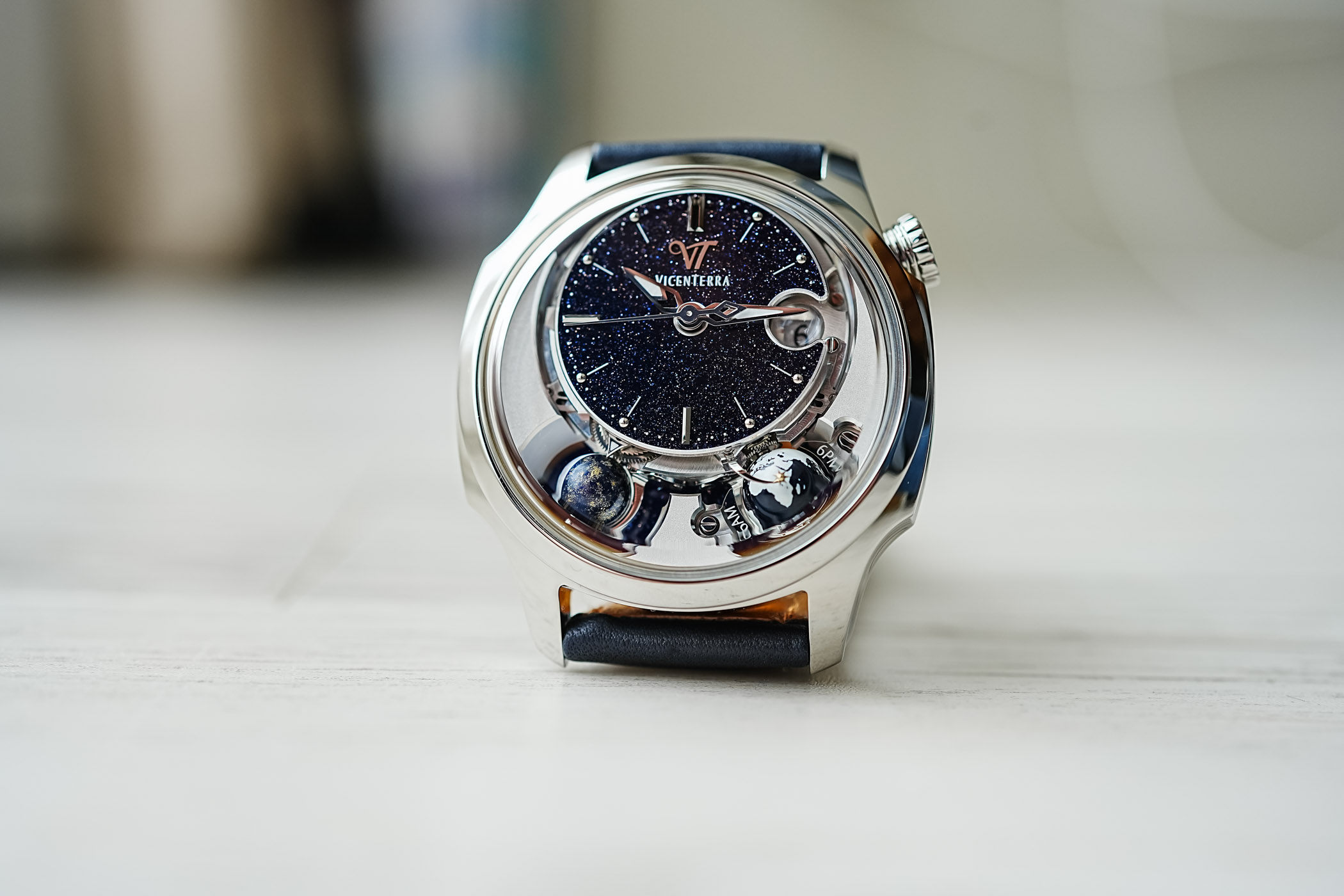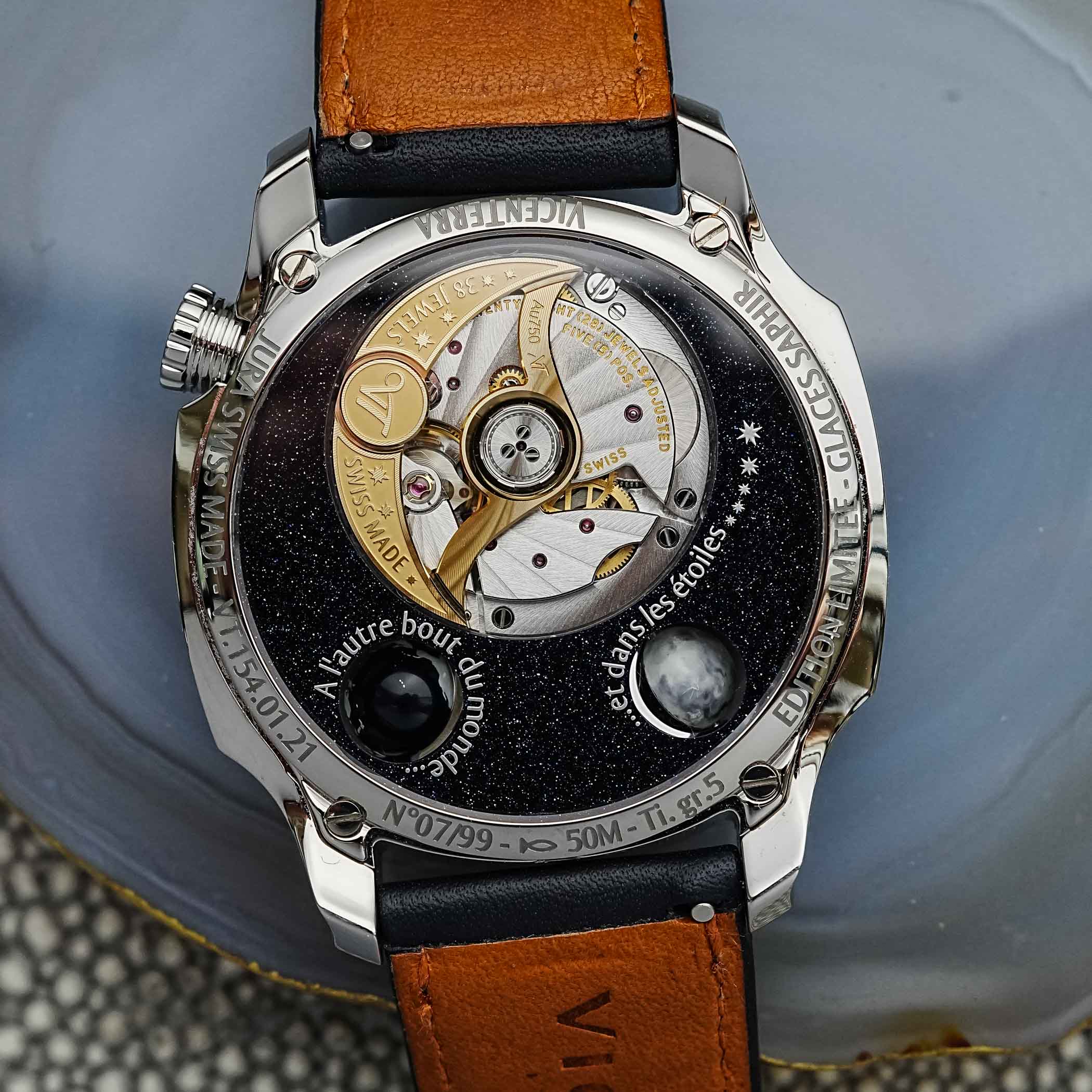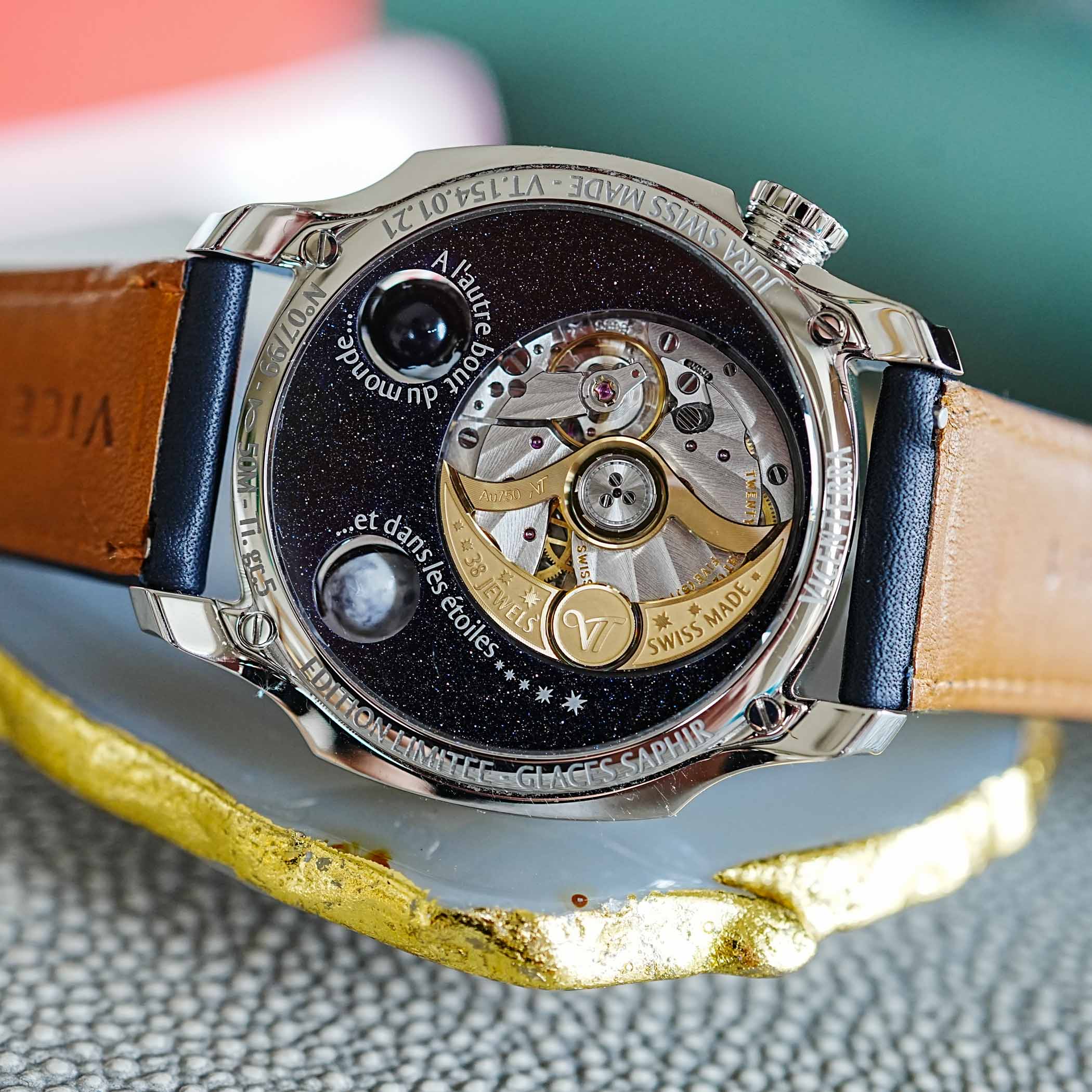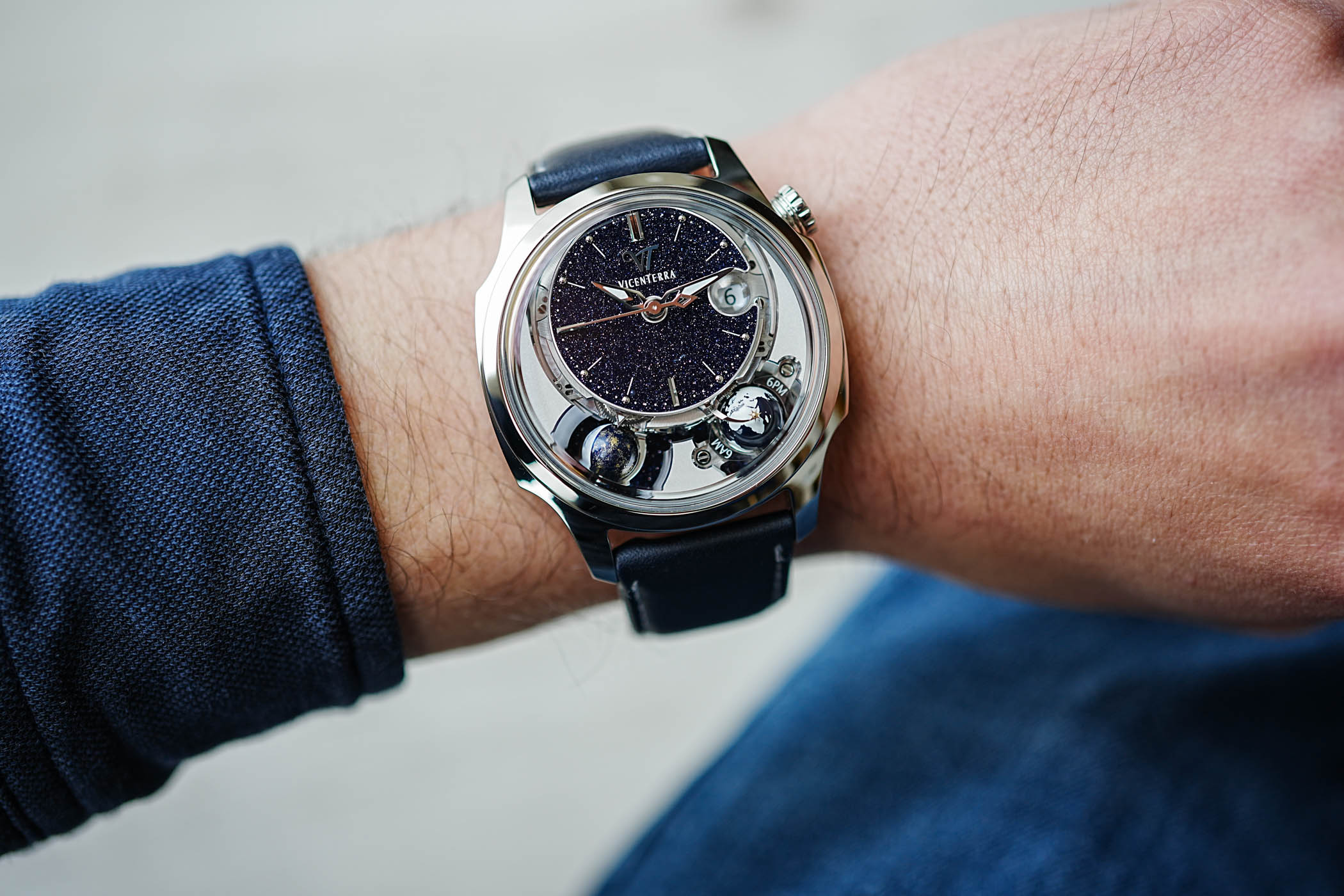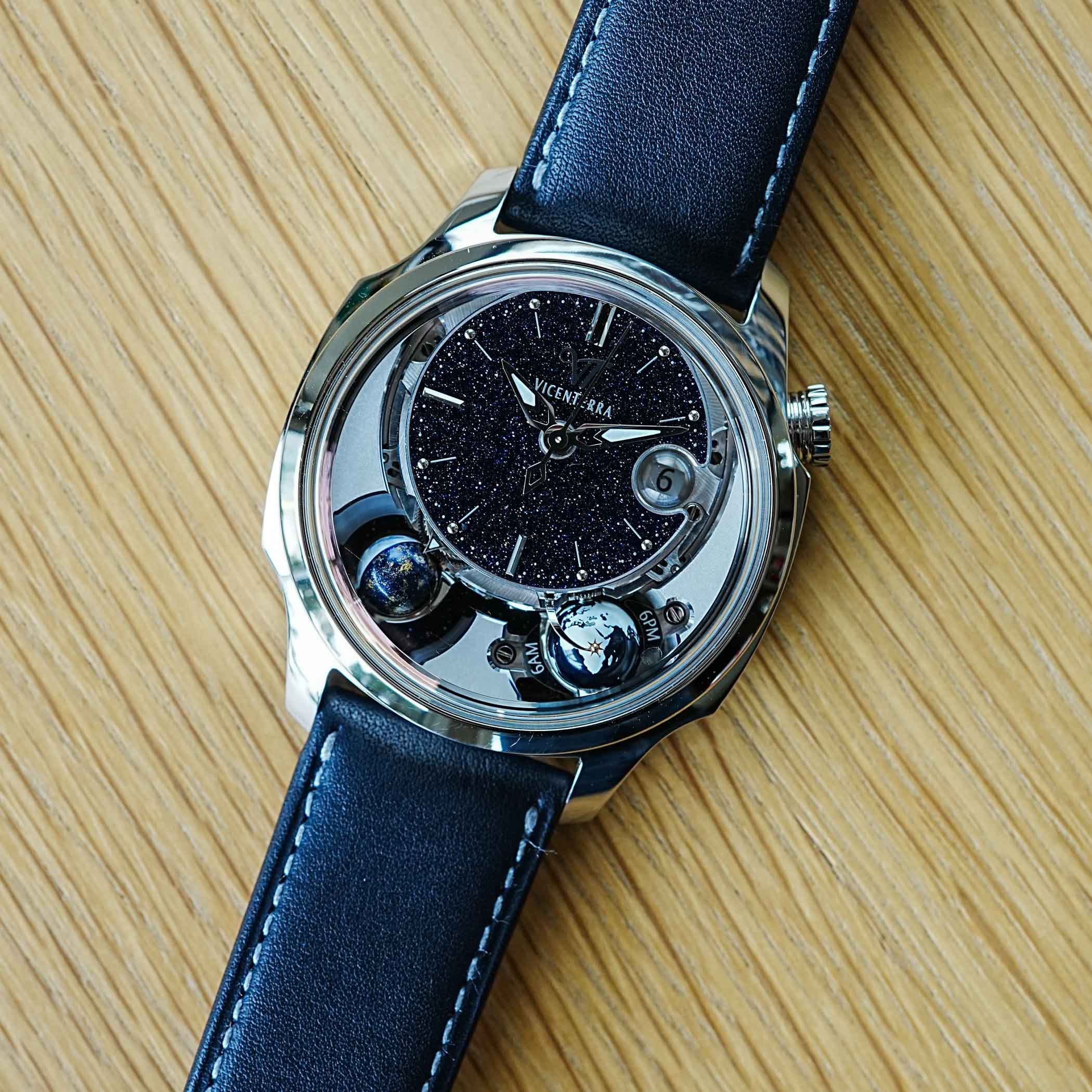The Mesmerizing Vicenterra Astroluna T1 Aventurine
The dark blue aventurine dial makes the Astroluna appear elegantly poetic.
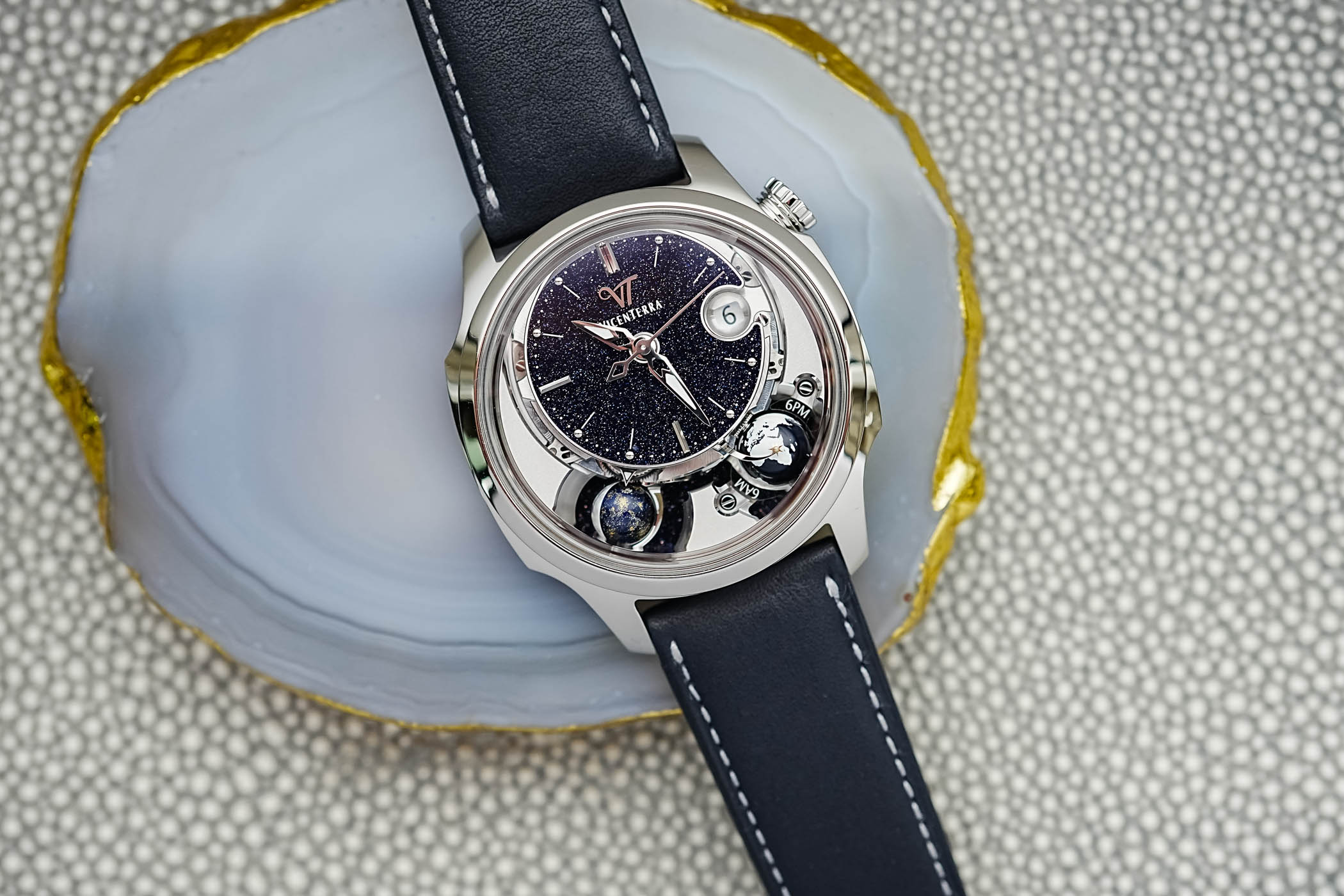
Behind Vicenterra is Vincent Plomb, a draughtsman-builder turned structural engineer turned casting moulds designer who finally settled on becoming a watchmaker in the early 2000s. Those were the days when extravagant watchmaking creations and independent brands flourished, but few survived the financial crisis of 2008 and the following clean-up. Much to Vincent Plomb’s credit, he didn’t abandon his dream but pursued it, and by 2009 his GMT-3 model began to materialise with pre-orders coming in from interested parties from around the world in numbers sufficient enough to deliver the original timepiece. The inaugural GMT-3 in the tonneau-shaped case featured a retrograde date, GMT dial and a revolving 3D Earth globe; the latter would become a signature element of Vicenterra watches, present in all of Plomb’s timepieces. However, the piece we had our hands on represents a third Vicenterra collection, called the Astroluna, with the Earth, the Sun and the Moon working together to provide us with mesmerising indications. Let’s have a closer look at the exciting Astroluna T1 Aventurine by Vicenterra.
The Astroluna T1 Aventurine is the kind of watch that is all about detail. The Grade 5 polished titanium case is shaped and built using 49 components. Our edition is a larger version, 43.5mm x 13.50mm, with a lug-to-lug measuring 51.64 mm, and there is a smaller, 41.5mm Classic version with the same thickness, though, but in a round case. Vicenterra places the Astroluna crown at 2 o’clock, a much-welcomed design solution that makes this large piece more wearable. The round polished bezel holds the box-type sapphire crystal in place with an anti-reflective coating on both sides, and the caseback is transparent, too.
Visually, the dial side of Astroluna is divided between the main dial for the hours and minutes indication with an incorporated date aperture in the upper part and the rhodium-plated crescent that holds the spheres for the Moon and the Earth with the little Sun in zenith. The time dial is dark blue aventurine glass. With all the sparkles, it evokes images of stars and galaxies far away, as was intended. The shiny dots for the indices are white gold, and the curved and (Super-LumiNova-coated) hour and minute hands are rhodium plated. The seconds hand with a spearhead-like tip is polished and rhodium-plated, too. The starry dial sits atop the movement with the exclusive Vicenterra module, and parts of the mechanism are visible – the wheels and gears that rotate the spheres at 5 and 7 o’clock are particularly special.
The hand-painted Earth globe with a tiny golden Sun in the zenith is a fun little object, more poetic than functional in precise GMT-indication terms. It makes a complete turn in 24 hours, and it tells you where on Earth there is noon, 6 AM, 6 PM, and night – to learn where it is dark on our planet, you will have to flip the watch over, the properly marked aperture – A l’autre bout du monde – will reveal the dark side of the Earth. To set the desired global position, you must move the hour and minute hands to 12 o’clock, then press the corrector button at 4 o’clock on the caseband to move the globe until the Sun reaches the desired time zone, one of 24 in Vicenterra’s concept. After performing the globe setting, ensure the date is displayed correctly, for when moving hands to noon may have thrown it off. To correct and to set the time use the crown at 2 o’clock.
The spherical Moon is also a beauty and, in a way, is much more practical (to some) than the faux-GMT; it is here to display the moon’s phases. The Moon makes one rotation in 29 days, 12 hours and 45 minutes, and theoretically will need no correction for 126 years. The Moon has a dark and bright side, with lunar landscapes meticulously painted by a miniature artist. Also, the light side is primed with a white Super-Luminova, so at night, a pale blue luminescence radiates to reveal the face of the Moon, as we might see it. As for the Earth, there is an aperture to display the other side of the Moon on the caseback, both apertures are surrounded by the starry night sky, provided by another aventurine glass. Correction is done by a recessed pusher at 8 o’clock.
The aventurine plate also has a large opening to showcase the Vaucher Manufacture Fleurier Seed 3000 automatic movement with the oscillating weight customised and manufactured by Vicenterra. The gold rotor is engraved with the Vicenterra logo (twice) and proudly displays 38 jewels (the movement is marked 28 jewels, 38 considered the total number, including the module) and Swiss-made inscriptions. The Seed 3000 is a self-winding (unidirectional) calibre with twin barrels and a variable inertia balance wheel. This movement is also quickly wound. Most probably chosen by Vicenterra for its 23.30mm x 3.9mm size, which leaves room for creativity, but also for the fine finishing, like Côtes de Genève and circular graining, with bevelled bridges. The movement provides 50 hours of power reserve and beats to 28,800vph, so it should be accurate.
The Vicenterra Astroluna T1 Aventurine watch we had was fitted with a blue calfskin strap (alligator is optional), a folding clasp for closing – a polished titanium buckle, and steel blades. The strap is equipped with pushers to allow easy removal, a sign of the times. The watch is water-resistant to 50m; it is wise to remember not to go submersible with this CHF 18,250 (taxes excluded) and limited to 99 per case diameter timepiece.
Final Thoughts
It is hard not to like Astroluna because it is an interesting-looking watch and an honest interpretation of its creator’s horological vision. As much as I am a snob inclined to enjoy the classic designs, I recognise the creative spirit and believe that independent watchmakers are the driving force of the industry, for they are constantly searching for new forms and even functions. The Vicenterra Astroluna T1 Aventurine is a rather appealing timepiece, perhaps a bit too large in this iteration, offering three-dimensional displays for time zones and moon phases. Those searching for original will not overlook Vincent Plomb’s lyrical and technical approach to watchmaking.
To order your Jura Swiss-Made Astroluna T1 Aventurine or for more information, please visit www.vicenterra.ch.

